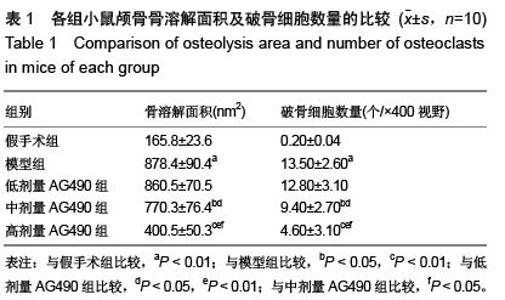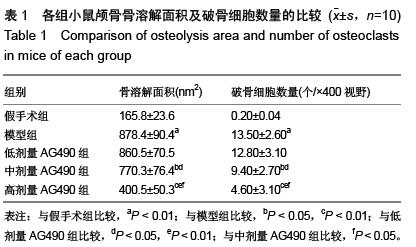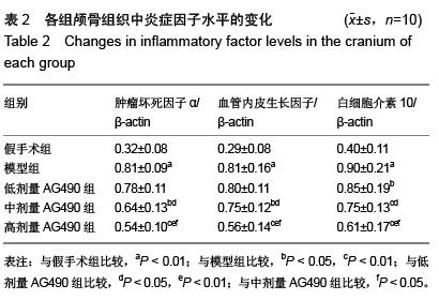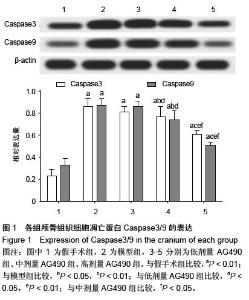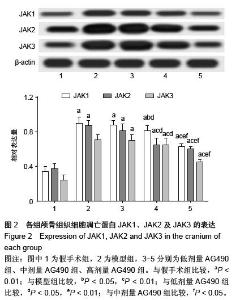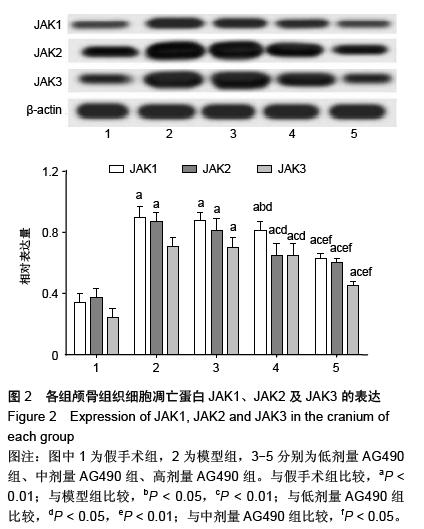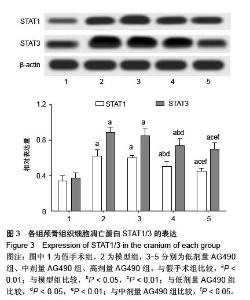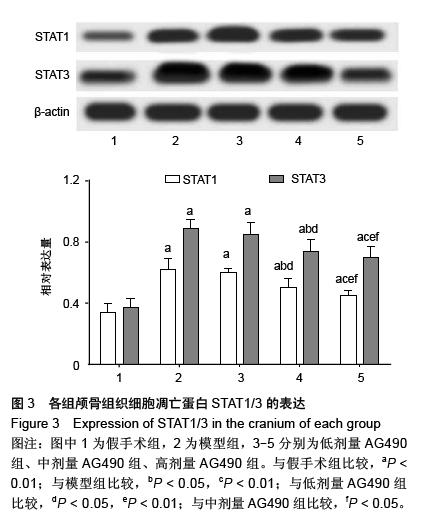| [1] 金亮,孙闯,于大淼,徐英,等.中药防治假体周围骨溶解的研究进展[J].现代生物医学进展,2015,153(7):1380-1382.
[2] 张志强,方永超,王强.人工关节假体周围炎性骨溶解的生物学机制[J].中国骨与关节损伤杂志,2014,29(1):103-104.
[3] 尚毓,于淑芬,王池平.放射性核素骨显像诊断人工关节置换后假体感染的临床研究[J].中华医院感染学杂志,2014,24(12):3024-3026.
[4] 刘铭,张健,魏小兰,等.改良型磨损颗粒诱导小鼠颅骨溶解模型的构建[J].中国老年学杂志,2013,33(23):5927-5930.
[5] 刘国印,赵建宁,王瑞.磨损微粒诱导细胞凋亡与无菌性松动的研究进展[J].中国骨伤,2013,26(9):791-796.
[6] 漆启华,戴闽,董谢平.细胞外基质金属蛋白酶诱导因子及基质金属蛋白酶9在镁硅玉人工关节假体无菌性松动中的作用[J].中国修复重建外科杂志,2013,27(10):1175-1180.
[7] 刘彩奇.炎性因子影响人根尖乳头干细胞增殖及成骨/成牙本质能力的实验研究[D].南方医科大学,2014.
[8] 赵刚,刘路阳,蒋丽妍.自组装多肽纳米支架对炎症刺激下成骨细胞迁移、增殖影响的研究[J].口腔医学研究,2014,30(3):197-200.
[9] 罗瀚文,汪晖,王林龙,等.过氧化物酶体增殖物激活受体γ在骨关节炎发生机制中的作用研究进展[J].中国药理学与毒理学杂志, 2013,27(5):872-875.
[10] 白庆霞.TLR4在破骨细胞中的生物学作用及其与经典Wnt信号相互作用机制的初步研究[D].第四军医大学,2013.
[11] 万睿,李平,周园东,等.纱布纤维可否在小鼠气囊植骨模型中诱发炎性骨溶解的研究[J]. 中国全科医学,2013,16(6):648-652.
[12] 朱世军,徐耀增,崔京福,等.雷尼酸锶对钛颗粒诱导炎性骨溶解的抑制作用[J].骨科,2014,5(2):65-68.
[13] 陈德胜,张先龙.RANK、RANKL与人工关节磨损颗粒诱导骨溶解[J].国际骨科学杂志,2012,33(6):398-400.
[14] 薛照静,申乐,王之遥,等.JAK2/STAT3通路参与大鼠坐骨神经结扎神经病理性疼痛模型[J]. 基础医学与临床,2014,34(1):62-67.
[15] 李常虹,赵金霞,孙琳,等.AK2/STAT3信号通路对RANKL诱导的RAW264.7细胞向破骨细胞分化的影响[J].中国骨质疏松杂志, 2013,19(5):421-425.
[16] 徐君翔,徐又佳,林华.“铁调素-Jak/Stat通路-骨代谢”相关性研究近况[J].中国骨质疏松杂志,2013,19(7):740-743.
[17] 梁志鹏,杨波,杨英.骨髓增殖性肿瘤伴骨纤巨核细胞形态及BCR-ABL、JAK2V617F基因的相关性研究[J].中华细胞与干细胞杂志(电子版),2013,3(1):7-12.
[18] 刘艳武.紫檀芪通过抑制JAK2/STAT3信号通路抗人骨肉瘤细胞活性研究[D].第四军医大学,2013.
[19] 吴明霞,李西海,李俐,等.电针对骨性关节炎软骨细胞JAK-STAT信号通路表达的影响[J]. 福建中医药大学学报,2011,7(6):21-23.
[20] Fang D,刘风雨.白介素-6参与大鼠骨癌痛的外周敏化机制:白介素-6通过JAK-PI3K通路上调伤害性感觉神经元中TRPV1膜表达[J].中国疼痛医学杂志,2015,21(6):478.
[21] 胡龙,叶啟发,王彦峰,等.细胞凋亡在脑死亡供体肾中的研究进展[J].生物医学工程与临床,2014,18(1):210-213.
[22] 曹波,牛聪,卢涛,等.五味子乙素对UVB辐射诱导HaCat细胞凋亡的抑制作用及其机制[J].中国药理学通报,2014,30(4):523-527.
[23] 张学鹏,刘锋,黄秀旺,等.灵芝三萜组分GLE诱导CNE2细胞凋亡与线粒体途径的关系[J].中国医院药学杂志,2014,34(11):102-106.
[24] 刘哲,张峰,李丽阳,等.西洋参皂苷对缺血-再灌注诱导乳鼠心肌细胞凋亡及钙浓度的影响[J].中国生物制品学杂志,2014,27(5): 661-663.
[25] 金弢,胡伟琦,方迪龙,等.苦参注射液与卡铂联合诱导原发性肝癌细胞凋亡的分析研究[J]. 中华中医药学刊,2014,33(6):1472-1474.
[26] 姬颖华,杨晓煜,李伟伟,等.白藜芦醇通过抑制IL-6调节JAK2/STAT3信号通路诱导伯基特淋巴瘤细胞凋亡[J].中药新药与临床药理,2015,26(3):302-306.
[27] 滕文静,周超,曹晓靖,等.重楼皂苷影响JAK/STAT3通路诱导结直肠癌细胞凋亡[J].时珍国医国药,2015,26(4):808-811.
[28] 何平,李丹,李德天,等.乙肝病毒X蛋白通过激活JAK2/STAT3信号通路调节肾小管上皮细胞凋亡[J].中国病理生理杂志, 2014, 30(8):1451-1460.
[29] 谢薇,周君,罗庆禄,等.脉冲电磁场对兔膝骨关节炎软骨细胞凋亡及凋亡调控蛋白的影响[J].四川大学学报:医学版,2014,45(1):107-110.
[30] 明磊国,王鸣刚,陈克明,等.蛇床子素对体外培养破骨细胞骨吸收及细胞凋亡的影响[J].药学学报,2012,47(2):174-179.
[31] 周小莉,苟晓燕,李荣亨.复元胶囊对大鼠膝骨关节炎模型软骨细胞凋亡及增殖的影响[J].中国老年学杂志,2014,35(21): 6111-6114.
[32] 刘国印,王瑞,董磊,等.内质网应激介导成骨细胞凋亡在骨溶解骨组织中的作用及机制[J].中国组织工程研究,2014,18(33):5257-5265.
[33] 黄自强,周勇刚,季卫平,等.聚乙烯假体致髋膝关节骨溶解差异的临床研究[J].中国现代医生,2014,52(16):41-43.
[34] 徐展望,李念虎.柚皮苷抑制PMMA颗粒诱导的破骨细胞形成及骨溶解[J].中国骨与关节损伤杂志,2014,29(6):572-575.
[35] 王俊,朱旭日,张超,等. 中药淫羊藿苷干预人工关节磨损微粒诱导的骨溶解[J].中国组织工程研究,2014,18(17):2625-2631.
[36] 陈俊,唐安洲,梁钢,等.苦参碱改构体X调控Caspase-3, Caspase-8和Caspase-9蛋白表达诱导人鼻咽癌CNE1凋亡的研究[J].中国药理学通报,2013,29(8):1136-1140.
[37] 史婷婷,白建平,梁月琴,等.芹菜素对大鼠缺血/再灌注心肌细胞凋亡及相关蛋白Bcl-2、Bax、Caspase-3表达的影响[J].中国药理学通报,2011,27(5):666-671.
[38] 曹延萍,郝咏梅,刘青娟,等.内质网应激及其特有凋亡途径Caspase-12与糖尿病大鼠肾组织固有细胞凋亡之间的关系[J].中国应用生理学杂志,2011,27(2):236-240.
[39] 葛建彬,顾锦华,李梅,等.银杏内酯A对小鼠脑缺血/再灌注损伤的保护作用及其抑制NF-κB信号通路下调p53、Caspase-3表达的机制[J].中国药理学通报,2012,28(8):1105-1110.
[40] 潘锋,张涛,陈建永.马齿苋多糖干预大鼠溃疡性结肠炎Caspase-3 Caspase-8表达的研究[J].中华中医药学刊, 2010,28(8):1639-1641.
[41] 高润成,王志文,袁强,等.麝香乌龙丸对兔膝骨关节炎软骨组织形态及p38MAPK,Caspase-3表达的影响[J].中国实验方剂学杂志, 2013,19(11):228-231. |
